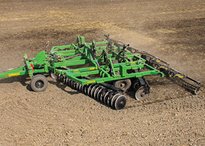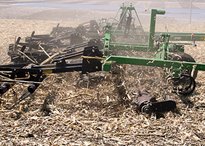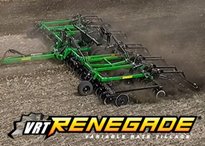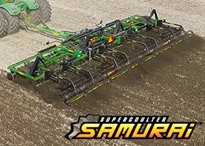Spring TillageWhether you do light or heavier tillage in the spring, there are many equipment options to help warm the soil and produce a level soil profile ahead of spring planting.
Spring Residue ManagementHeavy residue can prevent the soil from warming and/or drying out in the spring. The right tillage tool can help size the residue and warm the soil, so you can start planting sooner and achieve quicker emergence.
Fall TillageFor most people, fall tillage involves more conventional tillage tools, such as disks and chisel plows, that offer deeper tillage depths for mixing a lot of soil.
Fall Residue ManagementStart sizing and mixing residue in the fall to help it break down by spring. This can also help incorporate important nutrients back into the soil.
No TillNo till has different meanings to different people. Some no-till operations believe in zero soil disturbance. Others feel that no till doesn’t necessarily mean “never till.” No matter what camp you’re in, Summers has solutions for you.
Minimum TillageFor operations that are somewhere in-between no till and conventional tillage, there are a variety of tools available to manage residue and condition the soil, while keeping soil disturbance to a minimum.
Conventional TillageConventional tillage is often characterized by deeper tillage tools, such as disks and chisel plows, that can mix large amounts of soil, bury heavy residue or break compacted layers.
Vertical Tillage A vertical tillage tool is one that enters and exits the soil on a vertical plane. There are many benefits to vertical tillage, including residue and moisture management.
Seedbed PreparationSeedbed preparation is more important than ever with today’s high-speed planters. A good seedbed preparation tool will leave a smooth, level soil profile to ensure accurate planting depth.
Soil ConditioningGetting ready for spring planting? A light tillage tool can help get your soil in top condition.
Land RollingLand rolling pushes rocks and rootballs into the ground, so they don't damage the combine during harvest. It can also firm the soil and help break down residue.
Rock RemovalRemove rocks completely with a continuous rock picker. Or, you can use land rollers and coil packers to push rocks into the soil after planting, which can help avoid costly combine damage at harvest time.
Field SprayingNo matter what types of chemicals you plan to apply, pull-type field sprayers are an efficient way to get the job done. They can be an effective solution for both large and small acre operations.
Mounted Attachments Create the ideal field finish with a mounted attachment on your tillage equipment. You can use harrows, rolling baskets or rolling choppers to achieve the desired soil profile.
Fertilizer/Nutrient Application Adding fertilizers and other nutrients to your soil is the best way to give crops a head start on reaching their full potential.
Variable Rate Tillage™Because fields can vary greatly, Variable Rate Tillage allows a farmer to shift aggressiveness in order to get the best field finish possible.
 Hats, Diecast Models, Gloves and More!
Hats, Diecast Models, Gloves and More!

































